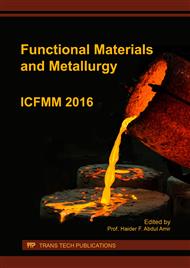[1]
Zhou Wenbo. Shield Tunnel Construction Technology and Its Application[M]. Beijing:China Architecture and Building Press, 2004. (in Chinese).
Google Scholar
[2]
Zhang Fengxiang, Zhu Hehua, Fu Deming, et al. Numerical analysis on mid - partition structure of the loess double arch tunnel[J]. Chinese Journal of Underground Space and Engineering, 2005, 5(6): 837-840. (in Chinese).
Google Scholar
[3]
He Chuan, Zeng Dongyang. Shield tunnel structure design and effect of construction on the environment[M]. Chengdu: Xi'nan Jiaotong University Press, 2007. (in Chinese).
Google Scholar
[4]
Wang Mengshu. An Overview of development of railways, tunnels and underground works in China[J]. Tunnel Construction, 2010, 30 (4): 351-364. (in Chinese).
Google Scholar
[5]
Sun Jun. durability design problems of subway and sub-river tunnel segment lining structures[R]. Shanghai: Shanghai Tunnel Engineering &Rail Transit Design and Research Institute, 2007. (in Chinese).
Google Scholar
[6]
Sun Jun. Durability design of segment lining structure in Chongming Yangtze River shield tunnel[J]. Journal of Architecture and Civil Engineering, 2008, 25 (1): 1-9. (in Chinese).
Google Scholar
[7]
Chen Junsheng, Mo Haihong, Liang Zhongyuan. Study on local cracking of segments in shield tunnel during construction[J]. Chinese Journal of Rock Mechanics and Engineering, 2006, 25 (5): 906-910. (in Chinese).
Google Scholar
[8]
Jiang Duncan. Causes and counter measures for segment cracks[J]. Chinese Journal of Underground Space and Engineering, 2009, 29(6): 694 - 698. (in Chinese).
Google Scholar
[9]
Yan Zhiguo, Zhu Hehua, Liao Shaoming, et al. A study on performance of steel fiber reinforced concrete segment [J]. Chinese Journal of Rock Mechanics and Engineering, 2006, 25(1): 2888-2893. (in Chinese).
Google Scholar
[10]
Xu Mingchan, Zhang Zixin. Cause analysis and treatment of segment damage of large diameter shield tunnel[J]. Chinese Journal of Underground Space and Engineering, 2013, 9(1): 1705-1712. (in Chinese).
Google Scholar
[11]
Plizzari G. A., Tiberti G. Steel fibers as reinforcement for precast tunnel segments[J]. Tunnelling and Underground Space Technology, 2006, 21(3): 438-439.
DOI: 10.1016/j.tust.2005.12.079
Google Scholar
[12]
Dobashi H., Konishi Y., Nakayama M., et al. Development of steel fiber reinforced high fluidity concrete segment and application to construction[J]. Tunnelling and Underground Space Technology, 2006, 21(3): 244-244.
DOI: 10.1016/j.tust.2005.12.066
Google Scholar
[13]
Caratelli A., Meda A., Rinaldi Z., et al. Structural behaviour of precast tunnel segments in fiber reinforced concrete[J]. Tunnelling and Underground Space Technology, 2011, 26(2): 284-291.
DOI: 10.1016/j.tust.2010.10.003
Google Scholar
[14]
GB 50152-2012. Stander methods for testing concrete structures[S]. Beijing: China Architecture & Building Press, 2010. (in Chinese).
Google Scholar
[15]
GB50010—2010. Code for design of concrete structures[S]. Beijing: China Architecture & Building Press, 2010. (in Chinese).
Google Scholar


